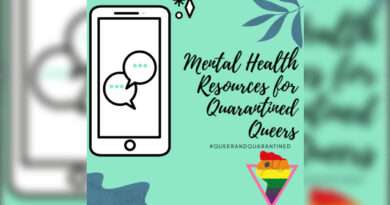She-Ra: The Reboot and Rejoicing in Queer Identity
She-Ra and The Princesses of Power was created by ND Stevenson (Nate Diana Stevenson) in 2018. The show’s first episode aired on 13th November 2018 and ended after 5 seasons on 15th May 2020. It is a re-boot of the 1980s original She-Ra, but with a more explicitly queer cast and storyline.
I remember coming across this show on Netflix and immediately dismissing it as a childish cartoon – but as I started watching the show, I could not stop binging it till I was done with all 5 seasons. It left me with several identity-affirming and emotional life-lessons through each interaction the characters have with one another.
This show has a whopping 95% on Rotten Tomatoes and an 8/10 on IMDb. It has also won the 2021 GLAAD Media Award for Outstanding Kids & Family Programming.
It is indeed outstanding programming as the premise of the show is built off-of our orphaned protagonist – Adora – finding family within her allies, against a common enemy hell-bent on exploiting Etheria. Each princess has an element, emotion and a vice related to the kingdom they preside over, however, they are never presented as flat characters.
Each princess is given a chance to truly question whether they are doing the right thing – be they on the “good” or the “bad” side. Season 1 is the perfect example of discovering almost all of the princesses’ strengths and weaknesses and how they overcome it as Adora, along with Princess Glimmer and Bow seek them out to join their Rebellion against the invading Horde.
Apart from the princesses, even the supposed bad guys who were once Adora’s allies in the Horde are given character-arcs and are treated not as sub-human in the later seasons. Everyone is allowed to grow and forget pain even within moments of conflict, as they look back to their pasts for comfort.
The beauty of this series is that all the relationships in it are messy. Messy like an argument that does not end between two close friends because of a petty issue, or messy because of a large group dynamic and clashing egos. It makes the characters far more well-rounded and humanizes them.
Most kids’ shows tend to use the age-old trope of “hero struggles against villain, almost loses but reinforcements arrive in the form of friends.” And make it a recurring theme instead of a continued plot that makes sense in the universe that is established, but this show subverts those monotonous standards.
It treats the audience as smart, yet gently guides us into each new plot and sub-plot without giving everything away. It gives room for the audience to analyse the characters on our own time and possibly even see ourselves in characters we deem “irredeemable.” In Season 1 which has 13 episodes, we see the main conflicts are between Adora and her childhood best friend, Catra. While Adora is admired and promoted to be Force Captain by the superiors in the Horde, Catra is considered the problem-child of the group of Cadets and is always sidelined.
Episode 1 (The Introduction of The Protagonists)
In Episode 1, we are introduced to Adora and Catra in the militaristic, harsh headquarters of the Horde that are fighting a holographic simulation of a “dangerous princess”. It is later revealed that the Horde’s purpose is to eradicate the Elemental Princesses and “bring peace to Etheria”. As the episode progresses, we see a stark difference in the personalities of the two childhood best friends: Adora feels like she is a part of something bigger than her, while Catra is far more reserved and focused on immediate success.
We see as the episode progresses that Adora comes across a sword in the middle of a patrol with Catra – Catra dismisses Adora and they return to their headquarters. Later that night, Adora sneaks into the Whispering Woods and feels like it is very familiar to who she was, before she was adopted into the Horde as an orphan. Our secondary protagonists: Princess Glimmer and her best friend Bow come across the sword as well, at night, and we see the trio get into fights, danger, and multiple hijinks with cyborg bugs, as well as addressing the initial distrust and opposing opinions between Glimmer and Adora.
Within this conflict, Bow is shown to be the glue of the group – and he will continue to be so throughout the series, as well as being a compassionate moral-compass as the group begins to get larger with more allies and friends.
Princess Glimmer of Bright Moon is shown to be an anxious person, nervous about being perfect and needing acceptance from her mother, the Queen Angella.
Episode 2: Building Trust and Forging New Bonds
In Episode 2, after escaping the defense systems of an old First Ones relic, we see Glimmer and Bow introduce Adora to the peaceful citizens of Etheria, in the small settlement of Thaymor. Before they can enter the settlement however, Adora is made to remove her Horde soldier jacket and wears a flowy robe and a flower behind her ear, to help her blend in. This also serves another purpose as the residents of Thaymor have lost countless loved ones to the Horde’s atrocities.
This scene also made me wonder if all that the Horde soldiers needed was to remove their rigid uniforms and live life in the shoes of their “enemies” in order to realise there is no difference between them, nor any animosity.
Adora enjoys her time in the humble settlement, although initially shocked because she was fed false intel by the Horde that Thaymor was a heavily fortified Rebel fortress. She begins to approach everything with a childlike wonder, almost convincing Glimmer to reconsider her coldness.
The good times do not last, as the Horde suddenly lays siege upon Thaymor and Adora is horrified and runs off to stop her comrades, apologising to Glimmer and Bow, asking them to evacuate everyone. She comes face-to-face with Catra who climbs out of a tank that was firing at innocent civilians. Adora tries to tell Catra that they have been lied to, Catra nonchalantly tells her that she knew Shadow Weaver was brain-washing them and was okay with meting out destruction on innocents, as long as she and Adora are safe.
Adora begs Catra to leave the Horde and tells her they can’t go back. Here, we see the moral juxtaposition between the two. Catra electrocutes Adora, capturing her and telling her that she is delusional and doesn’t know what she wants. We can see that this is a twisted, toxic affection Catra holds, one that many queer youths are familiar with when we come across toxic family and friends that are unwilling to accept our identities and will inflict pain upon us to “conform.”
They eventually part as Adora is saved by Bow and willingly turns into She-Ra for the first time, with Glimmer trusting her with the Sword – and lays waste to the Horde’s forces till they retreat.
Only Catra realizes that She-Ra is Adora as she backs away into the dark smoke and out of sight as Adora is comforted and taken back home by her new friends, Glimmer and Bow.
Oh, and a random horse joins them – yes, he is an important character but I will introduce him in a bit.
Episode 3: Taking Accountability, Becoming A Hero
In Episode 3, the trio (and the “Horsey!” As Adora names him) return to Bright Moon as Glimmer hides Adora away in her room, asking her to turn into She-Ra in front of Queen Angella. For some reason, Adora can’t make the change, she wonders if the only way she can transform into She-Ra is if the people she cares about are in mortal danger.
She sneaks out into the woods behind the castle and practices with the Sword as Horsey watches, until she accidentally sends a beam of energy that transforms Horsey into a Unicorn-Pegasus that startles and flies away!
Panicking, she runs into the woods and comes across a time-shifting witch called Madame Razz, who gives hints as to having known the previous She-Ra, Mara. Curious, she follows Razz to find berries and ends up back at the Beacon that once chased her out of it (in episode 1) for being an intruder. Razz tells her of the history of Etheria, the first loss of the Rebel Princesses against the Horde’s invasion as well as to why the Princesses seem on edge, and isolated from one another, unlike their parents who fought together.
Adora fights against more Horde soldiers as she turns into, She-Ra and threatens them to leave, lest they face her wrath. She is successful in scaring them away but faces harm to herself as she’s safely evacuated by Madame Razz as well as Horsey!
Horsey telepathically tells Madame Razz to tell Adora that his name is Swift Wind, and that he is connected to her psychically, as he is her steed.
We see that Adora is willing to help strangers in need, to give up her safety to protect those more vulnerable than her and she flies off to Bright Moon to reveal herself to Queen Angella. She enters the royal court as She-Ra but transforms back into herself as everyone is shocked to see the Horde insignia on the back of her shirt.
She pledges herself to Bright Moon and to The Rebellion, and is accepted by Angella who knows of She-Ra, but expects Glimmer to take accountability for Adora as she is still perceived as an ex-Horde soldier.
Meanwhile, Catra is tortured by Shadow Weaver to go back and find Adora. Shadow Weaver cannot fathom as to why Adora would leave and blames Catra, berating her and calling her a menace. Shadow Weaver’s dismissal of Catra in favor of Adora reflects a lot of harmful, abusive family dynamics where parents refuse to accept that their “good child” who is too scared to speak up against them has left the nest, and they place their frustration onto their “lesser obedient” children through harsh discipline and abuse.
She turns Catra in to Hordak, their commander-in-charge, hoping she will be exiled or imprisoned but is shocked as Hordak berates her instead and promotes Catra to Force Captain status, tempting and disciplining her to go after Adora and defeat her.
While Adora walks through the discomfort and shines in the light, Catra is tempted by her myopic aspirations of power and control and sinks further into the toxic comfort of darkness.
Episode 4: The New Princess Alliance
In Episode 4, we meet the princesses, Spinerella and Netossa, that are a happy gay couple who are also protectors of Bright Moon. They sit in the War Council room and give strategic opinions to Angella regarding the next moves to be taken to combat the Horde.
Glimmer requests Angella to go give relief for the Kingdom of Plumeria, that has been plunged into a state of decay due to the Horde’s invasion and corruption of their natural resources. With her mother’s permission – and explicit instruction to not engage the Horde in combat – Glimmer, Bow and Adora as She-Ra, lead the relief mission.
Back at the Fright Zone, which houses the Horde’s base, Catra is being berated by Shadow Weaver, again. We see that much like Glimmer wanting to impress Angella, Catra wants to impress Shadow Weaver and craves her approval.
This dysfunctional mother-daughter relationship is brought up over-and-over again to emphasize to the audience the toxic filial patterns that one can imbibe and externalize onto other loved ones, because pain is seen as a normal thing to “succeed” in a relationship, especially for Catra.
On the other hand, we see Bow and Glimmer innocently hyping up She-Ra and her exploits as Princess Perfuma of Plumeria and her citizens function on toxic positivity and wanting others to fix their Sacred Tree as they are too afraid of conflict and its consequences.
Adora eventually succumbs to the pressure and transforms back into herself, shocking the citizens as they accuse her of being fake and unable to fix their problems. Glimmer comes to her defense as she berates them for expecting her to do everything without them having to lift a finger to save themselves.
After this fallout, Perfuma orders her people to leave and relocate as Glimmer and bow apologise to Adora for not checking-in on her mental health and asking her if she is okay with them over-hyping her. The trio then run off towards the nearby Horde base to confront them.
Perfuma returns and is invigorated by Adora’s letter she left for them, apologising for not being able to help the way they thought she could, as she rallies her people to fight against the Horde and get back their land and their peace.
Our heroes succeed in defeating the Horde soldiers as Adora takes advantage of their rigid time schedules to sneak in and blend in as one of them in order to dismantle the machine poisoning the land of Plumeria. Reinforcements arrive and ensure that their success is guaranteed.
Perfuma then becomes the third princess to pledge herself to The Princess Alliance for The Rebellion.
Conclusion and Final Thoughts
I do not want to give away too much, but this series manages to give the viewers a wonderful balance between addressing toxic family as well as addressing the pressures of Gifted Child Burnout Syndrome, co-dependent toxic friendships, and relationships as well as beautiful Queer-platonic love and support, growth and embracing your imperfections – to finally understand that you are good, as you are and do not have to change to fit the standards of those who do not wish the best for you.
Doesn’t all this sound so exciting? Don’t you want to meet the other new princesses? To learn more about each of their backstories? Then I suggest you go and watch this wonderful series and I hope you find comfort in it, as much as I and other queer folks have.
She-Ra and The Princesses of Power is a wonderful beacon of light (see what I did there?) and representation, in an industry where queer media is over-saturated with traumatic depictions of queer lives. For once, through this series, let us enjoy ourselves in embracing a Happy Ending and the journey to get to it.



